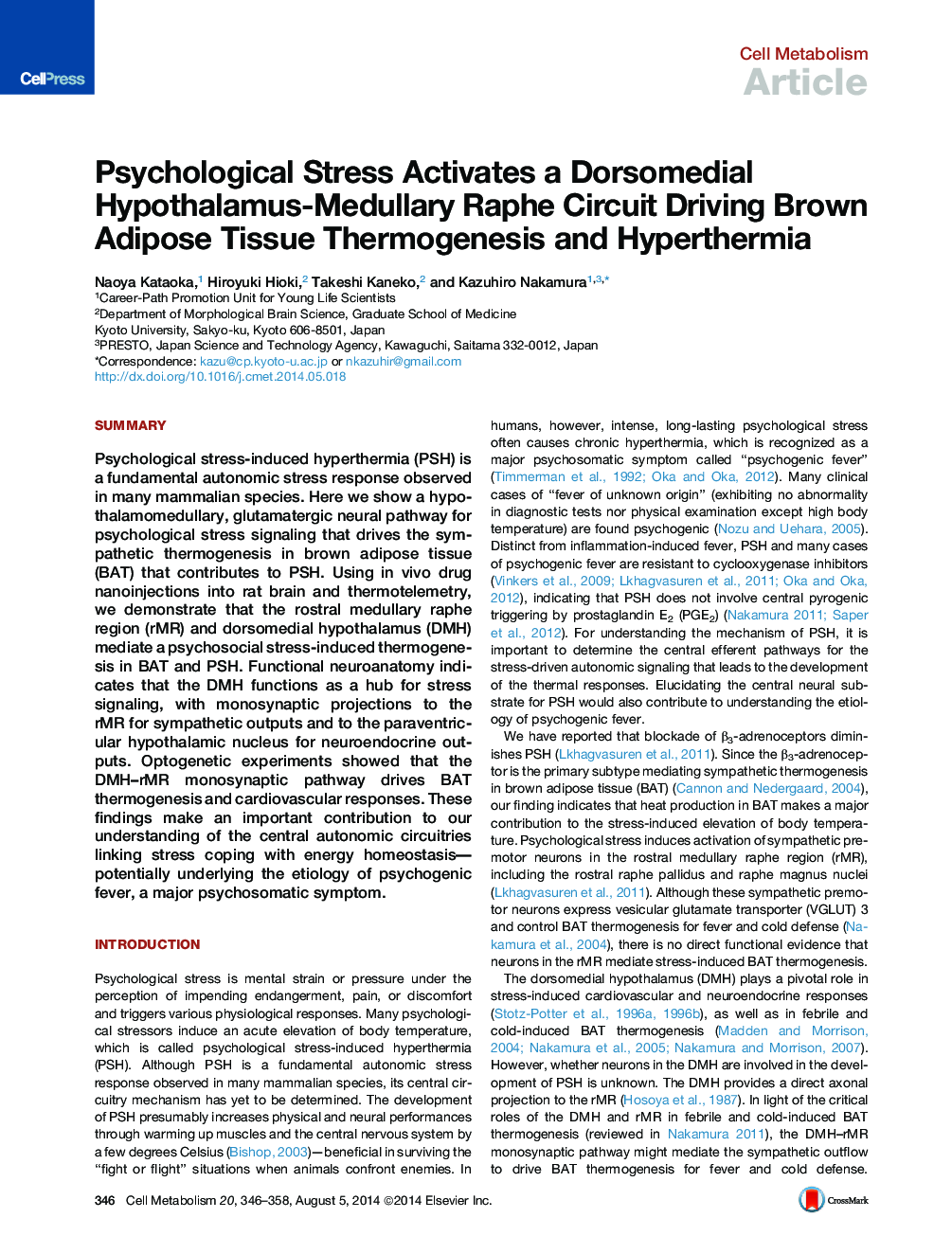| Article ID | Journal | Published Year | Pages | File Type |
|---|---|---|---|---|
| 2792610 | Cell Metabolism | 2014 | 13 Pages |
•DMH and rMR neurons mediate stress-induced BAT thermogenesis and hyperthermia•DMH functions as a hub for stress signals to sympathetic and neuroendocrine outputs•Photostimulated DMH–rMR neurotransmission drives autonomic responses mimicking stress•LH–rMR projection neurons including orexin neurons elicit only weak BAT thermogenesis
SummaryPsychological stress-induced hyperthermia (PSH) is a fundamental autonomic stress response observed in many mammalian species. Here we show a hypothalamomedullary, glutamatergic neural pathway for psychological stress signaling that drives the sympathetic thermogenesis in brown adipose tissue (BAT) that contributes to PSH. Using in vivo drug nanoinjections into rat brain and thermotelemetry, we demonstrate that the rostral medullary raphe region (rMR) and dorsomedial hypothalamus (DMH) mediate a psychosocial stress-induced thermogenesis in BAT and PSH. Functional neuroanatomy indicates that the DMH functions as a hub for stress signaling, with monosynaptic projections to the rMR for sympathetic outputs and to the paraventricular hypothalamic nucleus for neuroendocrine outputs. Optogenetic experiments showed that the DMH–rMR monosynaptic pathway drives BAT thermogenesis and cardiovascular responses. These findings make an important contribution to our understanding of the central autonomic circuitries linking stress coping with energy homeostasis—potentially underlying the etiology of psychogenic fever, a major psychosomatic symptom.
Graphical AbstractFigure optionsDownload full-size imageDownload high-quality image (313 K)Download as PowerPoint slide
